McDonnell Douglas DC-10 Continental
Production Time 9 to 10 weeks
Shipment is by FedEx, UPS or DHL International Express Courier with a normal door-to-door delivery time worldwide of within 2-3 business days after dispatch. Due to the current volatility of world fuel prices, the amount mentioned here is our best estimate for DHL and UPS and may be subject to change at the time of shipping.

Model Description: McDonnell Douglas DC-10 Continental Wood Replica Scale Custom Model Aircraft
Manufacturer: McDonnell Douglas
Wingspan: 16.5 Inches (41.9 Centimeters)
Height: 5.8 Inches (14.7 Centimeters)
Scale: 1:120
$239.50
Production Time 9 to 10 weeks
-
United States dollar ($)
-
Pound sterling (£)
-
Euro (€)
-
Australian dollar ($)
-
Canadian dollar ($)
-
Singapore dollar ($)
-
Swiss franc (CHF)
-
Japanese yen (¥)
-
Danish krone (kr.)
-
Hong Kong dollar ($)
-
Norwegian krone (kr)
-
Swedish krona (kr)
-
United Arab Emirates dirham (د.إ)
General Product Description
Our PlaneArts McDonnell Douglas DC-10 Continental model exhibits unique, unrivaled quality and detailed design to come as close as possible to the accuracy of the actual plane. It comes as standard with a robust, durable base or stand which is available in a variety of different finishes designed to match your own personal requirements including solid wood, wood with polished metal supports or adjustable wood wall mount and will be ready within about 9-10 weeks from placement of order.
The McDonnell Douglas DC-10 Continental model is made of the finest kiln dried renewable mahogany wood (commonly known as Lauan or Meranti) which has undergone many stages of carving and meticulous and careful sanding giving the beautiful finished museum quality masterpiece. Many collectors and model connoisseurs demonstrate their preference for genuine handmade and hand painted mahogany wood models rather than plastic or die cast (diecast) alternatives due to the overall look and totally different feel of the item - we trust you will find the same. We can, however, if required produce the same model in Solid Cast Resin so just click and contact us us for further information. Our craftsmen and gifted artisans ensure that our finely handcrafted model airplanes match the precise blueprint details of the original aircraft. The paint scheme, markings and parts are closely matched, reflecting the original aircraft. This stylish top-quality desktop replica model will surely enthrall anyone who receives this as a gift and for sure one of the most appropriate and desirably collectable gifts for any aviation enthusiast and avid aircraft collector whilst also displaying a perfect resemblance to the actual aircraft.
If you require we can also make the McDonnell Douglas DC-10 Continental model in any other airline, private livery or colour scheme you require and if necessary in a different size or scale. Just click here to contact us with a description or photographs of what you require, and we will let you have a quotation for the necessary customization by return email. We can also make bespoke scale replicas of any other private / civil commercial airliner or airliners, helicopter, glider, gliders with engines, military jet, warplane jets, propeller warplanes, biplane, triplane, tail fin, spacecraft, rocket or NASA model you require in any airline, military or civilian livery or colors. We also produce model airships, blimp, dirigible, blimps, boat and ship collectibles. Wall plaque or seal for military, government or private customers. Again, by clicking here to contact us just let us know exactly what you need.
As you may or may not be aware the trade name and copyright permissions for Douglas aircraft are now under the ownership of the Boeing Company and as such, we are proud to be one of the very few international and fully licensed manufacturers of Boeing solid mahogany wood models. You may be interested to read more about the fascinating background to the famous aviation names now under the Boeing umbrella by clicking on the following “Officially Licensed Product” image below:
The McDonnell Douglas DC-10 Continental: A Closer Look at an Iconic Trijet
The McDonnell Douglas DC-10 Continental represents a significant chapter in the history of aviation, standing out as one of the iconic trijet aircraft that revolutionized air travel during the latter part of the 20th century. This model, tailored for Continental Airlines, showcased unique features that distinguished it from other aircraft in the DC-10 family. Here, we delve into the notable aspects of the McDonnell Douglas DC-10 Continental, highlighting its design, performance, and the legacy it left in the world of commercial aviation.
Aeronautical Innovation and Design:
The McDonnell Douglas DC-10 was introduced in 1971, designed to meet the increasing demands of medium to long-haul flights. The DC-10 Continental version featured a distinctive three-engine configuration that allowed for extended range capabilities and improved performance on transcontinental and transatlantic routes. The engines were General Electric CF6 turbines, known for their reliability and efficiency, which were critical in establishing the DC-10’s reputation.
The airframe of the DC-10 Continental was robust, with a wide-body fuselage that provided a comfortable cabin environment. The aircraft could accommodate between 250 and 380 passengers, depending on the configuration, offering versatility for Continental Airlines’ various service needs. This adaptability made the DC-10 a popular choice among airlines that required a high-capacity, long-range aircraft.
Safety and Technological Features:
Throughout its service life, the DC-10 was subjected to rigorous safety evaluations and enhancements. After overcoming initial challenges, including a few high-profile incidents that prompted design reassessment and modifications, the DC-10 Continental demonstrated significant improvements in safety and reliability. Features like advanced hydraulic systems and redundancies were incorporated, enhancing the overall operational safety of the aircraft.
Moreover, the DC-10 included state-of-the-art avionics for its time. It featured an advanced autopilot system, inertial navigation, and later adaptations included flight management systems that helped reduce pilot workload and increase efficiency during long-haul flights.
Operational History and Legacy:
Continental Airlines utilized the DC-10 to expand its domestic and international route networks significantly. The aircraft’s ability to operate efficiently across both high-density short routes and less trafficked long-haul routes allowed Continental to optimize its fleet utilization and serve a broader market.
The DC-10 remained in production until 1988, with over 380 units built. Although it has since been succeeded by more modern aircraft, the legacy of the DC-10 continues. Many of the design principles and technological innovations first implemented in the DC-10 have influenced subsequent aircraft designs, laying the groundwork for the next generation of wide-body commercial jets.
Conclusion:
The McDonnell Douglas DC-10 Continental was more than just an aircraft; it was a symbol of the jet age’s maturation and the global expansion of the airline industry. With its distinctive trijet configuration, innovative design, and versatile performance, the DC-10 helped shape the future of commercial aviation. As such, it remains an important part of aviation history, remembered for its contributions to air travel and its enduring legacy in the skies.
| Weight | 6 kg |
|---|---|
| Dimensions | 17 × 16.5 × 5.8 in |



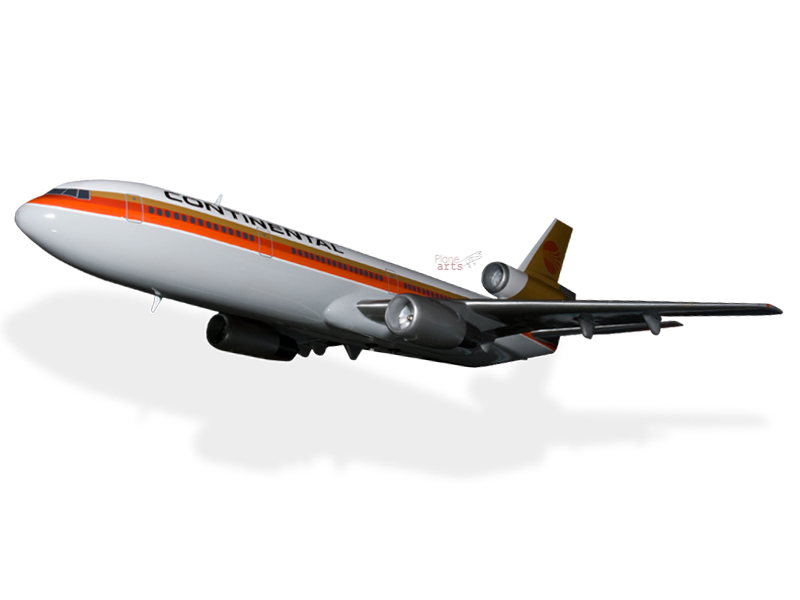
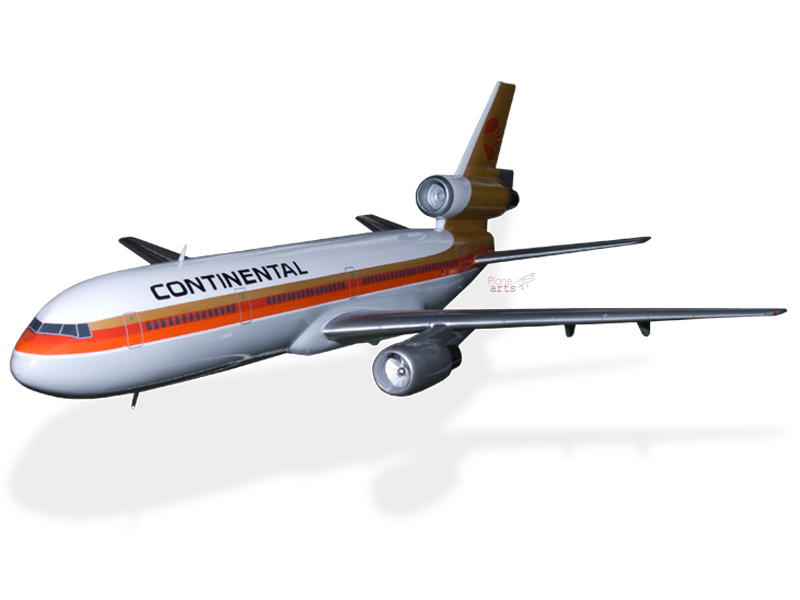
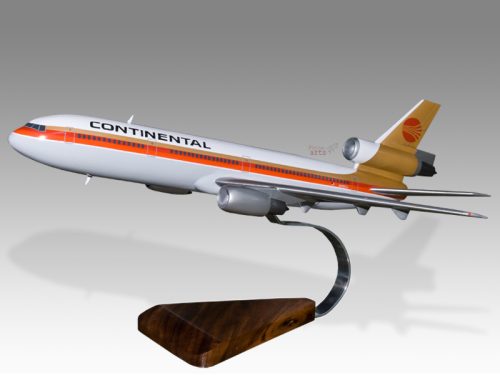
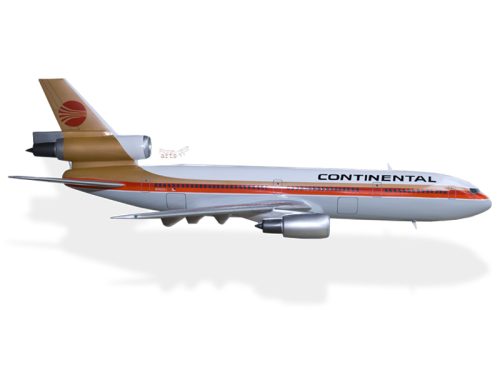
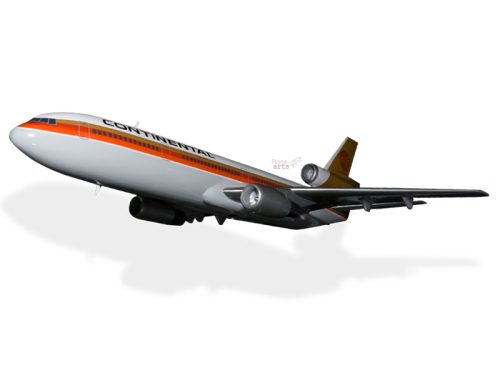

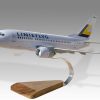


Reviews
There are no reviews yet.